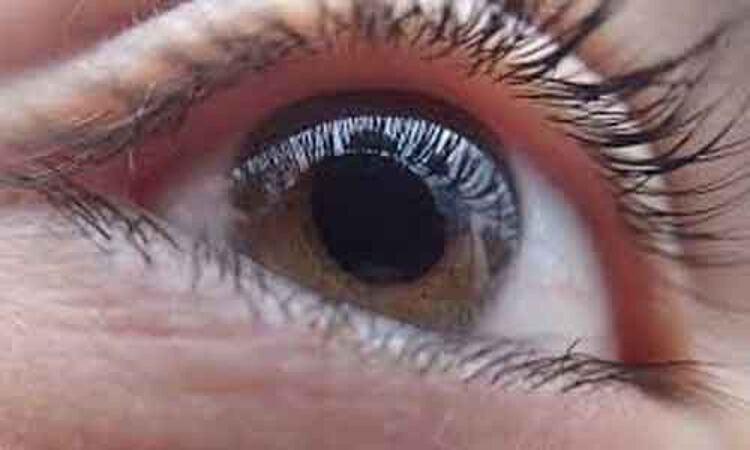- Home
- Medical news & Guidelines
- Anesthesiology
- Cardiology and CTVS
- Critical Care
- Dentistry
- Dermatology
- Diabetes and Endocrinology
- ENT
- Gastroenterology
- Medicine
- Nephrology
- Neurology
- Obstretics-Gynaecology
- Oncology
- Ophthalmology
- Orthopaedics
- Pediatrics-Neonatology
- Psychiatry
- Pulmonology
- Radiology
- Surgery
- Urology
- Laboratory Medicine
- Diet
- Nursing
- Paramedical
- Physiotherapy
- Health news
- Fact Check
- Bone Health Fact Check
- Brain Health Fact Check
- Cancer Related Fact Check
- Child Care Fact Check
- Dental and oral health fact check
- Diabetes and metabolic health fact check
- Diet and Nutrition Fact Check
- Eye and ENT Care Fact Check
- Fitness fact check
- Gut health fact check
- Heart health fact check
- Kidney health fact check
- Medical education fact check
- Men's health fact check
- Respiratory fact check
- Skin and hair care fact check
- Vaccine and Immunization fact check
- Women's health fact check
- AYUSH
- State News
- Andaman and Nicobar Islands
- Andhra Pradesh
- Arunachal Pradesh
- Assam
- Bihar
- Chandigarh
- Chattisgarh
- Dadra and Nagar Haveli
- Daman and Diu
- Delhi
- Goa
- Gujarat
- Haryana
- Himachal Pradesh
- Jammu & Kashmir
- Jharkhand
- Karnataka
- Kerala
- Ladakh
- Lakshadweep
- Madhya Pradesh
- Maharashtra
- Manipur
- Meghalaya
- Mizoram
- Nagaland
- Odisha
- Puducherry
- Punjab
- Rajasthan
- Sikkim
- Tamil Nadu
- Telangana
- Tripura
- Uttar Pradesh
- Uttrakhand
- West Bengal
- Medical Education
- Industry
New research paves the way for new anti-fibrotic therapy for glaucoma

Scientists at the University of Birmingham, UK, have shown that a novel low molecular weight dextran-sulphate, ILB® could play a key role in treating open angle glaucoma (OAG), a neurodegenerative disease that affects over 70 million people worldwide and causes irreversible blindness.
OAG develops slowly over many years. Excessive matrix deposition (fibrosis) within the eye's main fluid drainage site can lead to increased intraocular pressure (IOP), resulting in damage to the optic nerve.1
The research, reported in npj Regenerative Medicine, has shown that that ILB can normalise matrix deposition inside the eye and lower IOP in a pre-clinical model used to mimic these aspects of human glaucoma, paving the way for new anti-fibrotic therapies to be developed for the disease.
OAG is a complex disease and it has proved difficult to develop effective therapeutics to target the biochemical pathways involved. Existing therapies mainly work by reducing fluid production in the eye, not the underlying causes, and even the newer therapies have shown limited success in the clinic.2
The Birmingham scientists focussed on an inflammatory pathway that is common to several diseases, and involves Transforming Growth Factor β (TGFβ), a signalling molecule that communicates between cells and orchestrates both inflammation and fibrosis. TGFβ's role in OAG is well known, with patients demonstrating higher levels in their aqueous humour and laboratory studies showing that artificially increasing TGFβ within the eye can lead to fibrosis3,4.
The scientists found that ILB has multimodal actions across many genes that resolve inflammatory and fibrotic cellular processes. When they progressed their work into a pre-clinical experimental model of glaucoma, they found that daily subcutaneous injections of ILB significantly (p<0.01) reduced extracellular matrix levels within the eye's main drainage site, normalised the eye's pressure and prevented degeneration of retinal neurons. The research was conducted by Dr Lisa Hill, from the Institute of Clinical Sciences, and Dr Hannah Botfield, from the Institute of Inflammation and Ageing. They commented: "We are truly excited by these results, which show a way forward for a glaucoma treatment that can reverse the fibrotic process that causes the disease."
Clinicians working in ophthalmology generally prefer local over systemically delivered therapeutics, as it is a safer route of administration that is more acceptable to patients.
Dr Hill is leading a project to formulate a topical alternative that will avoid the need for injection. She is working closely on this with Mr Imran Masood, a consultant ophthalmic surgeon at Sandwell and West Birmingham NHS Trust and Professor Liam Grover, a biomaterials expert from the University's Healthcare Technologies Institute, to assess the use of a novel shear thinning fluid gel for the resolution of glaucoma.
The shear thinning fluid gel was developed for use as eye drops that are retained for an extended period of time following administration, and patents have been filed for its use both alone, and in combination with other therapeutics.5 Previous studies have shown the fluid gel reduces corneal scarring when applied topically, and it is an effective carrier molecule for other therapeutics.6
https://www.nature.com/articles/s41536-020-00110-2
Hina Zahid Joined Medical Dialogue in 2017 with a passion to work as a Reporter. She coordinates with various national and international journals and association and covers all the stories related to Medical guidelines, Medical Journals, rare medical surgeries as well as all the updates in the medical field. Email: editorial@medicaldialogues.in. Contact no. 011-43720751
Dr Kamal Kant Kohli-MBBS, DTCD- a chest specialist with more than 30 years of practice and a flair for writing clinical articles, Dr Kamal Kant Kohli joined Medical Dialogues as a Chief Editor of Medical News. Besides writing articles, as an editor, he proofreads and verifies all the medical content published on Medical Dialogues including those coming from journals, studies,medical conferences,guidelines etc. Email: drkohli@medicaldialogues.in. Contact no. 011-43720751


